Available RAM memory. Why Windows doesn't see RAM
On computers with the operating system installed Windows system 7, The amount of available random access memory (RAM) may appear to be less than the actual amount of memory installed on your computer.
For example: in 32-bit Windows versions 7, in the “System” section of the control panel, you can see that with 4 GB of memory installed on the computer, only 2.8 GB of memory is displayed.
Another example: in Windows 7 64-bit version it may show that with 8 GB of RAM installed on the computer, only 6.1 GB is available available memory.
Note. The available memory amounts shown in the examples are not accurate. The total volume available, free memory calculated by subtracting the total amount of memory reserved by the equipment from the amount physical memory.
For quick access to information about the amount of available and installed memory in Windows 7, you need to do the following:
1. Click the Start button, select Control Panel, then System and Security, then System.
2. Look at what is indicated in the Installed memory (RAM) field. You can see, for example, the following parameters - 4.00 GB (3.2 GB free), this means that out of the 4 GB of installed physical memory on the computer, only 3.5 GB is available.
What is the reason?
This situation is foreseen; it occurs on computers with the Windows 7 operating system installed. How much the amount of available RAM can be reduced may depend on several factors:
- Installed version Windows ( Basic version supports only 2 GB of physical memory, the rest is ignored).
Installed devices and memory.
BIOS configuration and version.
The ability of working memory to process information.
Other system parameters.
For example, if your computer has a video adapter with 256 MB of its own memory, this memory appears in the first 4 GB of address space. If 4 GB of physical memory is installed, part of the address space will be reserved to display the memory of the video adapter installed on the computer. To display the memory of this computer component device, a part is used system memory. As a result, the amount of total system memory available to the operating system is reduced.
Allocating physical memory in Windows 7
Below you can see into which resource categories the system divides the memory installed on your computer in Windows 7.
| Memory | Description |
|---|---|
| Reserved by equipment | Memory reserved installed drivers peripheral devices and for using the BIOS. |
| Used | The amount of memory used by drivers, processes, and the operating system itself. |
| Changed | The amount of memory whose contents must be transferred to disk for use for another purpose. |
| Reserved | Memory containing code and unused cache data. |
| Free | Memory that does not contain any important data. It is this portion of memory that will be used first if drivers, processes, or the operating system require additional memory. |
Note. Find out how it is distributed installed memory in your operating system, you can go to the “Control Panel”, “Resource Monitoring” section.
Click the Start button, enter “resource monitor” in the search for programs and files field, then select “Resource Monitor” in the “Programs” list.
On the “Memory” tab, at the bottom of the page, select the “Physical Memory” section.
After upgrading to Windows 10, many users began to complain about the problem of using incomplete RAM. As an example, let's take a case from the Microsoft forum. When installing 6 GB of RAM in Windows 10 32, only 3.92 GB was displayed. The entire amount of RAM was inaccessible, or rather, the system simply did not see it. In some cases, reinstalling the RAM strips in places and cleaning the contacts helped solve this problem. However, in a number of cases this problem could not be solved.
Ways to configure display of all RAM on Windows 10
If you are faced with a situation where not all RAM is available on Windows 10 and you have not swapped the modules, you should follow these steps:
- Press “Win+R” and enter “msconfig”.
- The System Configuration window will open. Go to the “Download” tab. Click on the “Advanced options” button.
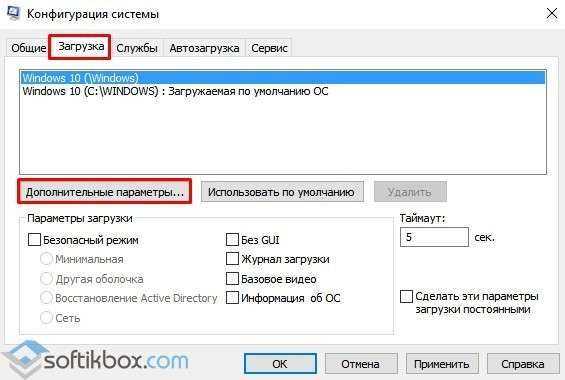
- Will open small window. Here you need to uncheck the “Maximum memory” checkbox.

- After saving the changes, you need to restart your computer and see how much memory is being used.
If Windows 10 does not see the full amount of RAM, you should remove the sticks from the slots and swap them. We also recommend cleaning the contacts of the RAM modules. To do this, take a rubber band and carefully wipe off dirt from the contacts.
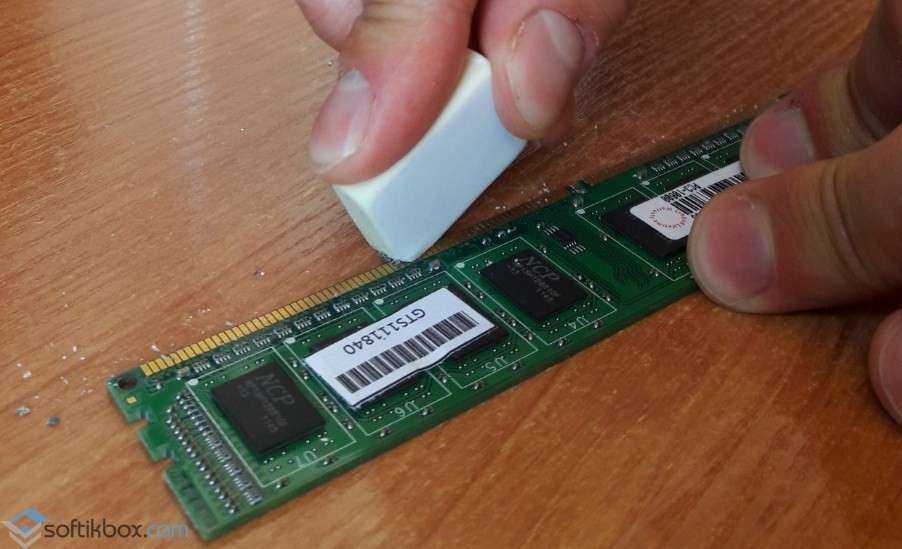
If you insert the modules incorrectly, a post will occur when the PC boots. You will need to return the modules to their places and restart the computer. After Windows boot 10 32 bits you need to download the program and check the functionality of the RAM.
If everything is in order with the modules, but Windows does not see everything RAM, perhaps you are using old version motherboard firmware is necessary, and also check some of its parameters.
- First BIOS parameter who is responsible for stable work RAM is memory redistribution. IN different versions In the firmware, this section can be named differently (Memory Hole Remapping, H/W DRAM Over 4GB Remapping, Hardware Memory Hole). Therefore, it is worth studying the instructions for the board in detail or finding a description for the version of the BIOS used.
The memory redistribution function transfers the address blocks used by expansion cards into the address space beyond 4 GB. Thus, it is possible to increase the amount of RAM (otherwise Windows10 will see 3-3.5 GB). To fully support such a volume, it is necessary to use 64 bit processors and 64's bit versions OS (or server versions of 32-bit operating systems, allowing PAE physical address extensions). If you have less RAM, be sure to turn off this option (Disabled), as problems with the RAM may occur. Enable memory redistribution – value Enabled.

- Memory settings for AGP video aperture are the amount of memory that the system shares with the video adapter. It is necessary for displaying textures and drawing pictures. This amount of memory may not be used by the system if it is blocked by the video adapter. There is only one way to enable it: boot into BIOS, select AGP Aperture size. Standard values: 32 MB, 64 MB, 128 MB and Auto. We look at how much memory the video card has and set the required value by value. Often this is 128 MB. However, you can try each of the options to see which one gives the best result.

After making all changes to BIOS settings you need to boot into Windows and check if the entire amount of RAM is visible. If the system still does not see the RAM, you should try inserting other modules into the slot. It is possible that the old RAM sticks have failed or are defective.
To learn why the system does not see all the RAM and how to fix it, watch the video:
If you decide to upgrade your computer by adding some RAM, it may happen that after installing it, the system will display the amount of memory that you installed, but not all of it will be available, and this is despite the fact that a 64-bit operating system is installed system.
Just recently, I had to face a similar situation. In general, to a computer that had 2GB of RAM installed, it was necessary to add another stick with the same amount of memory.
As a result, after installation, the system saw all 4GB of RAM, but it indicated in brackets that only 3GB was available. But the most surprising thing was that Windows 7 x64 was installed on the computer, therefore no restrictions should be imposed on the RAM, as is usually the case on x32.
Having started to figure it out, I eventually found a solution that helped me return my memory to its place and will gladly share it with you. Below in the article I will show what you can do if you see only 3 GB of RAM on Windows x64 instead of 4, 8 or 16 GB of RAM.
On a 64-bit system, instead of 4, only 3 GB of memory is available, what should I do?
Of course, the first thing I thought was that it was all in the system, perhaps some kind of crooked assembly was installed, but after Windows reinstallation nothing has changed from the licensed image and only 3 GB of memory was available as before.
Based on this, we can assume that the problem is in the hardware or in the BIOS settings.
Once in the BIOS, I started looking in the settings for any parameters that were somehow related to RAM.
After spending about 15 minutes turning different parameters on and off, as well as checking the results, I finally found something that helped me.
This is a parameter called " Momory Remap Feature", precisely after I changed its value from " Disable" on " Enable", in the system properties the memory began to be displayed normally, that is, all four gigabytes of RAM were now available.
How to find this parameter? Below I will show clear example where did I find this function? Of course, I understand that today there are quite a lot of different motherboards that have appearance is different. But for now I’ll stick to my example, and then, if possible, I’ll add something new. I can recommend looking for it in the chipset settings, most often that’s where it is located.
So, we reboot or turn on the computer and enter the BIOS, let me remind you that standard keys to enter BIOS " Del And F2", if nothing suits you.
Go to the tab " Advanced" and using the navigation arrows go down to the section " Chipset" or maybe " Chipset Configurations».
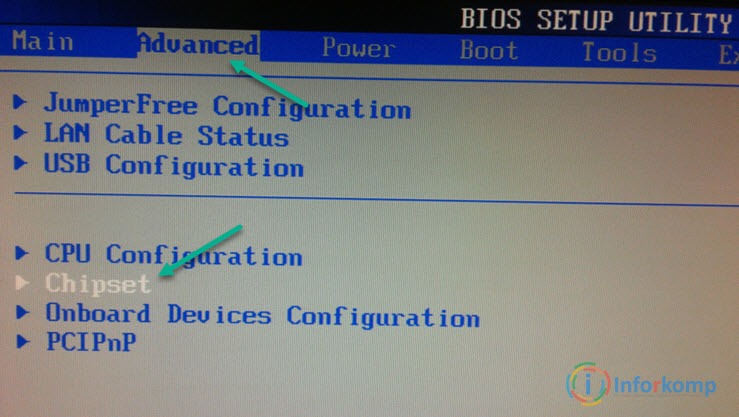
The next step is to go to the “ North Bridge Configuration" By the way, of this paragraph many may not have it, if this is the case, it’s okay, skip this step and move on.
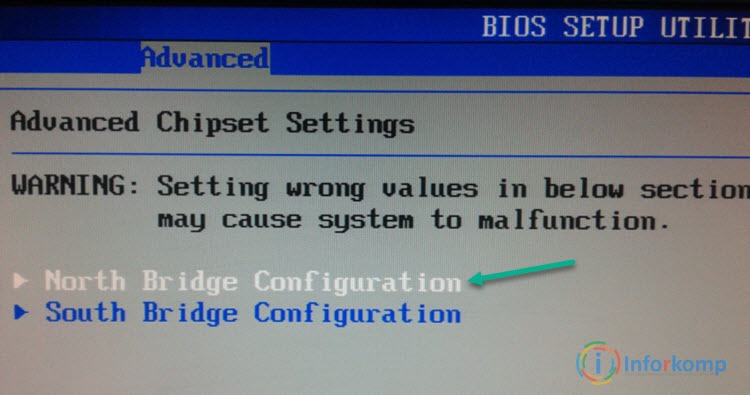
Having reached the right place select the option “ Momory Remap Feature", by pressing "Enter", set the value " Enable».

After, confirm the selected value and reboot the computer, saving all changes made by pressing the F10 key.
If earlier at 64 bit system instead of 4, you saw only 3 GB of RAM, now everything should change and after booting the computer, the system properties will show that all 4 (or more) gigs are in use.
By at least, it helped me, so the advice has been tested in practice and that is why I recommend using it first of all.
What else can you do if only three gigabytes of memory are available instead of four?
Everything is clear with the “Momory Remap” function, but what should those who don’t have it do? Yes, it may be that you won’t find this item at home, especially for laptop owners.
The fact is that this function can be built into the BIOS, even if there is no such parameter there. In such cases, of course, it is recommended to use the latest version. And only after this “Momory Remap” will begin to fulfill its functions.
You can also look for the parameter “ Memory Hole" its value should be set to " Disabled».
HPET Mode Another parameter that is recommended to be checked and set to “ 64-bit».
Opening through the window " Execute».
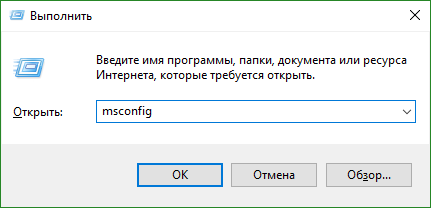
Move to the tab "" and click on "".
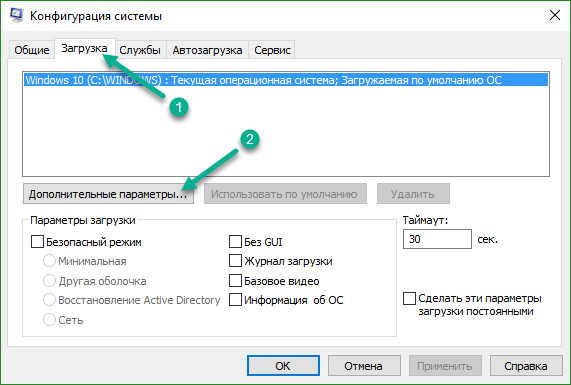
And here we uncheck the “” parameter.
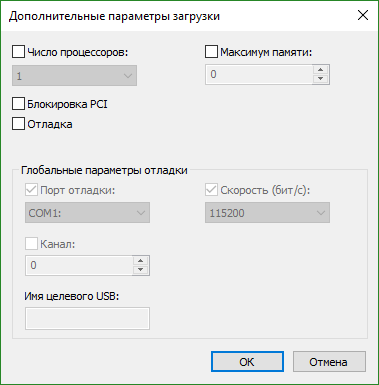
Apply the new settings and restart the computer.
Also, some amount of RAM can be used by the built-in video. For example, if your monitor cable connects next to USB ports, this means you are using the built-in video, therefore, for it to work fully, a certain part is taken from the total amount of RAM and transferred GPU, and that's why instead of 4 GB, you can see that there is a little less memory available, for example 3.5 GB. Here you will have to measure yourself or buy a discrete video card.
There is also information that even with separate installed video card, the processor continues to take RAM for the needs of integrated video. In this case, you need to change the processor graphics value to the minimum or disable it completely by setting the value for integrated graphics in the BIOS to Disable (PCI or Auto). After the reboot, all missing RAM should return to its place and be displayed in full.
And of course, there is a possibility that instead of the set amount of memory you see much less due to the fact that your motherboard It just doesn’t support, for example, more than 3 or 4 GB, but this usually happens on fairly old motherboards.
As you understand, there can be a lot of reasons for displaying 4 GB of memory instead of 3 GB, and everyone’s solutions may be different. In this instruction, I showed you what really helped me and what else you can try to get out of this situation. If anything, as always, I look forward to your comments, and together we will look for the answer to your question.
